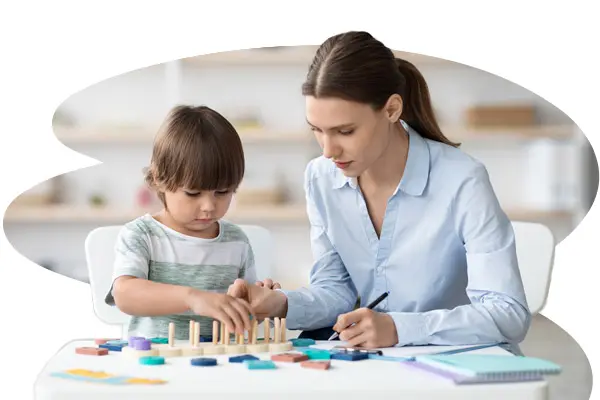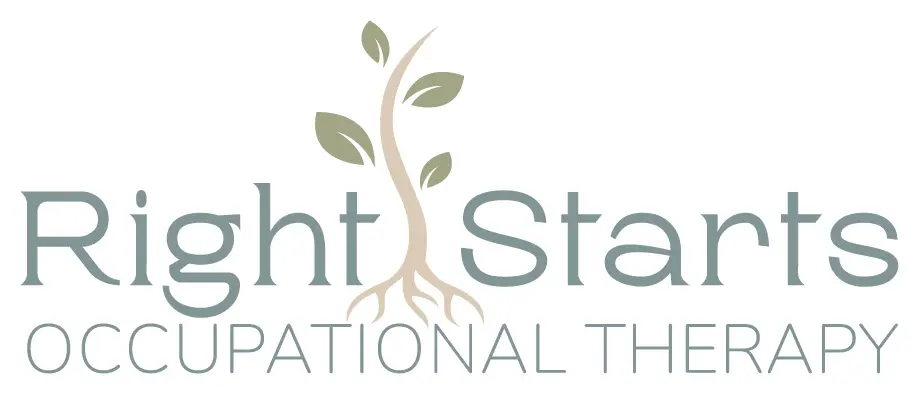When my son first arrived at Right Starts’ door, he was struggling on many levels and needed systemic support. Previous therapeutic approaches seemed to be able to identify specific areas of importance, but did not address his needs as a whole person and showed limited, one-dimensional results. The McHales’ approach is on an entirely different level. As experienced practitioners with a diverse complimentary tool bag, they see the client through the many lenses of their various skills and tailor their work to the client. I am always impressed how they observe and adapt to my son each session, meeting him where he is that day. However, and perhaps most profoundly, their genius is the ability to look at the client and see a pathway that maps strategy and clear steps to build long term, comprehensive support and healing progress. It is truly life changing to find practitioners who have the insight and hard won talent to grasp the whole picture with you and empower health. As a parent, I have benefited by learning new ways to notice and respond to my son’s needs and have gained tools to advance his development. At this point, he has been with Right Starts half of his life and he is completely transformed from the person who first entered the door. I never imagined he’d be doing the things he is today, and I can say without a doubt that Right Starts played a starring role in making these prayers a reality. Thank you!
Healing Pathways
Steps Towards Accelerated and Real Therapeutic Success


Holistic Occupational Therapy
Occupational Therapy focuses on the whole person -mind, body, and spirit- to enable individuals of all ages to participate in everyday life tasks. Holistic Occupational Therapy combines traditional OT interventions with integrative health modalities in order to collapse the timeline of healing to achieve faster results and create lasting change.
The integrative modalities utilized in therapy help to optimize the human body so every session is a success. Patients that are best fit for our practice are those that are open to holistic care and are willing to be active participants on their pathway to healing.
A “Healing Pathway” takes the guesswork out of navigating integrative care and provides patients and caregivers with a clear idea of what to expect during their course of treatment.
Phase 1
Cleanse
In order to optimize outcomes, we must first be mindful of the demands already being placed on the body internally. We live in a toxic world full of hazardous chemicals, EMF’s and pathogens that challenge our bodies daily. When the body is working to protect itself, it is less available to grow and thrive. We utilize functional healing modalities, such as Cellcore Biosciences, to support the body through the detoxification of pathogens, metals and other biotoxins. When this toxic load is taken off of the body, it is able to move out of survival mode and is available to make lasting changes.
Phase 2
Nourish
In addition to nourishment through healthy foods, our bodies also need regular nourishment of healthy, high vibrational energy frequencies that support the cells to function properly and bring vitality to the body. Cutting edge technologies allow us to provide this nourishment within the context of each treatment session by using body work modalities such as like Dolphin Neuro Stim, Frequency Specific MicroCurrent, or BioField Tuning.
Phase 3
Harmonize
Hands on techniques such as Craniosacral Therapy and Neuro Emotional Technique help bring the body into a harmonized rhythm by addressing physical, emotional and energetic interferences. When healthy rhythm is established within the body, the brain functions with greater ease and efficiency.
Phase 4
Activate
Before asking the brain to perform any new skills, we must first develop a foundation of “neurological readiness”. This phase focuses on activating the brain in an organized manner to ensure that the nervous system is tuned in and available for integrating new information. We may use modalities such as Brain Gym, Interactive Metronome, The Listening Program, and Kinesiotaping in this phase.
Phase 5
Thrive
It is here where we use therapeutic activities and therapeutic exercises to build new skills and optimize functional outcomes!
See how we used Healing Pathways to help Quinton, a child who contracted bacterial meningitis at 9 months but is now thriving!
Testimonials
My family and I have been lucky to have been introduced to Right Starts and we could not be anymore grateful for their guidance and support. We love the welcoming, homey atmosphere and they are always so calm, yet attentive to our family’s needs. Life can be crazy when you are a parent to a child who requires sensory or behavioral support and they have always been so helpful and never steer us wrong.
We have trusted Jamie and Brian with our son for the past six years. We couldn’t be any happier and highly recommend Right Starts. Not only are they skilled, professional, and get results—but more importantly, their hearts are made of gold. My son loves them as much as they love him.
When our 9 month old contracted life-threatening bacterial meningitis we contacted Jaime and Brian on our way out the door to the emergency room. Right Starts OT held our hand the entire time we were in the hospital, supporting us in ways we didn’t even know we needed. The owners were the driving force behind our discharge plan that allowed us to bring our medically fragile baby home during a time of Covid, a worldwide Pandemic. The hospital was pushing us to discharge to inpatient rehab and we just knew it wasn’t the right plan for us. Jaime and Brian supported us through a family planning meeting where we presented a telehealth team that we were fully confident would guide us towards full recovery. Jaime and Brian have directly treated our son for the last 8 months. With the support of the OT practice treating him weekly and providing family goals for wrap around support, this miracle baby has made gains to close the developmental gap that his neurosurgeon and neurologist say is the fastest rate of recovery in their career!! I can truly say this recovery was possible because of Right Starts Occupational Therapy.
The McHales are very knowledgeable on utilizing advanced & regular techniques to help create better health, function and wellness for their clients. They take a very caring and compassionate approach with every child.
I started using Right Starts when my daughter was diagnosed with dyslexia and we needed assistance with vision therapy. During the first session I was blown away by how creative Jamie’s plan of care was – really targeting tasks that my daughter was interested in and benefited from. Shortly after, I started bringing my son, who has a diagnosis of ADHD. Jamie and Brian worked with me to develop unique plans of care that targeted the goals of each child. Over the years, they have each improved dramatically and are excelling. I attribute a lot of their success to the work they have done with Jamie and Brian during the past 7 years. Both of these therapists are dedicated to the children and adults that they care for and that is evident from the moment you meet them. Get on their waiting list. You will not regret it.

